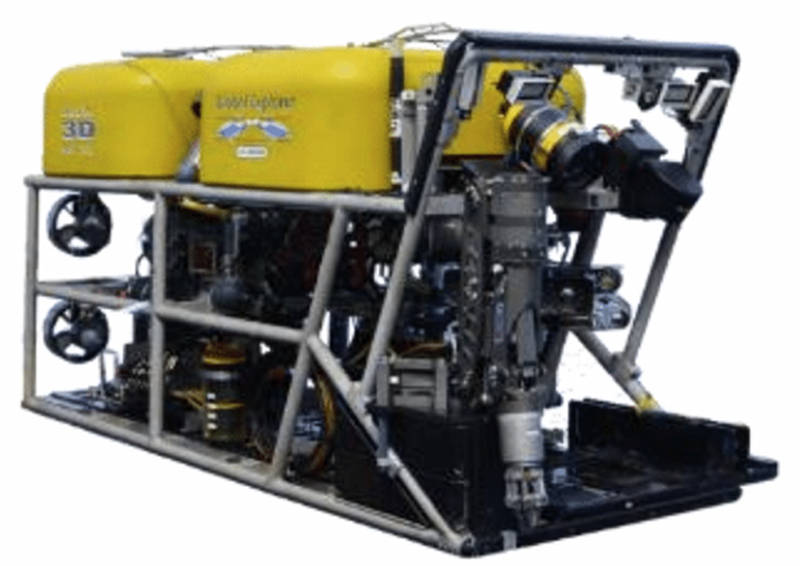
By Tamara Frank, Nova Southeastern University

Figure 1. Deep Sea Systems Global Explorer ROV. Image courtesy of Journey into Midnight: Light and Life Below the Twilight Zone. Download image (jpg, 50 KB).
We will be collecting fish, shrimp, and squid for our explorations of vision and bioluminescence below 1,000 meters (3,280 feet), but the trawl net tends to destroy the jellyfish, known as gelatinous zooplankton. Since so little is known about animals that live below 1,000 meters, we will be using the Deep-Sea Systems Global Explorer remotely operated vehicle (ROV; Figure 1) to also explore these depths, filming animals in their natural habitats. Remotely operated means that the vehicle is tethered to the ship with a long fiber-optic cable, and operations are controlled by skilled pilots on the ship while the ROV is deep in the ocean.
About the size of a minivan, the Global Explorer has multiple camera systems, several of which will be used for different parts of the project. The 10-times zoom HDTV video camera will take broadcast-quality color video from as little as 14 inches away to infinity. We will also be using the 24-megapixel digital photo camera with four laser lights for size scaling. Both cameras are critical for taking background images and up-close images of the animals living in the water column, particularly the very fragile gelatinous species. These cameras will allow us to conduct excellent video transects at these unexplored depths.
We are extremely fortunate in that Deep-sea Systems has just added an Ikegami low-light HDTV camera to their arsenal. This will allow us to take in situ video of organisms that are being stimulated to bioluminesce by mechanical stimulation. Bioluminescence is very common in the gelatinous world, and this will be the only way to study this in organisms that would be destroyed by the trawl net.